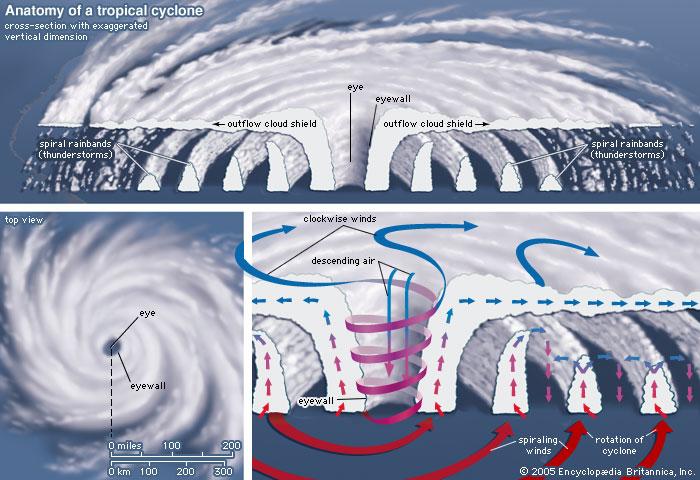Climate Change to Intensify Cyclones
Warming likely to make cyclones more destructive
Context: As the planet continues to warm, climate change is expected to make cyclones more intense and widespread, posing a significant risk to ecosystems and coastal regions.

More on News
- A new study by researchers from ETH Zurich warns that under the worst-case climate scenario, known as SSP5-8.5, tropical cyclones could cause unprecedented destruction, threatening ecosystems that have never experienced such storms before.
Cyclones and Climate Change: A New Era of Extreme Weather
- Cyclones: Cyclones are among the most powerful natural storms on Earth.
-
- While they are a natural phenomenon like wildfires or lightning, their destructive power is being amplified by climate change.
- SSP5-8.5: According to the study, under the SSP5-8.5 pathway — a future where the world rapidly consumes fossil fuels and reaches radiative forcing levels of 8.5 W/m² — cyclone activity is projected to intensify and shift into previously unaffected regions.
- Radiative Forcing: It is a key metric in climate science, measuring the energy imbalance in the Earth’s atmosphere.
- For comparison, current radiative forcing is about 2.7 W/m² above pre-industrial levels, while the Paris Agreement aims to limit this to 2.6 W/m² to keep global temperature rise below 2°C.
Ecoregion Vulnerability: More Areas at Risk
Using the CLIMADA open-source climate risk modeling platform, the study examined how 844 global ecoregions — classified as resilient, dependent, or vulnerable — respond to changing cyclone patterns. The researchers analysed tropical cyclone frequency and intensity data between 1980-2017 and projected changes for 2015-2050 using synthetic datasets like STORM-B and STORM-C.
Key findings include:
- 290 ecoregions are already affected by cyclones.
- 200 additional regions are considered vulnerable, with limited ability to recover after storm exposure.
- Resilient regions, such as parts of East Asia and the Caribbean, may see recovery periods between high-intensity storms shrink from 19 years to just 12 years.
- Higher-latitude regions, including parts of Oceania, Madagascar, and the Philippines, could face cyclone intensities and frequencies far beyond historical norms.
Mangroves Under Severe Threat by 2100
- In a companion study, researchers assessed the impact of rising cyclone frequency and sea levels on global mangrove ecosystems, which play a vital role in coastal protection, carbon storage, and marine biodiversity.
- Using advanced risk indices and climate models, the study simulated three climate scenarios — SSP2-4.5, SSP3-7.0, and SSP5-8.5. The findings are alarming:
- Up to 56% of mangrove forests could face high to severe risk under SSP5-8.5 by 2100.
- Southeast Asia could be the worst-affected region, with 52% to 78% of mangroves endangered.
- Even in moderate scenarios like SSP3-7.0, nearly all mangroves that protect people and infrastructure in Southeast Asia could be at severe risk.
- The risk was determined based on exposure to cyclones, the mangroves’ ability to adapt to rising sea levels, and the frequency of storm events.
- Cyclones with wind speeds exceeding 70 m/s and sea-level rise above 7 mm/year pose the highest danger.
Shifting Cyclone Belts and Ecosystem Collapse
- One of the most troubling conclusions from the study is that cyclone belts are likely to shift away from the equator, exposing new ecosystems — previously unadapted to such storms — to devastating impacts.
- These changes may lead some ecosystems to transform into entirely different states, from which recovery may be impossible.
With the increasing likelihood of entering a high-emissions future such as SSP5-8.5, governments and policymakers must prioritize climate adaptation strategies, sustainable energy transitions, and ecosystem resilience planning.
